Female Employment in the US: Key Findings
- Women constitute nearly half (46.8%) of the total labor force in the United States.
- Since 1990, the female employment rate in the U.S. has remained steady, peaking at 57.5% in 2000. It was 54.3% in 1990 and 55.2% in 2024.
- Minnesota has the highest labor force participation rate for women (81%), while West Virginia has the lowest (62.9%).
- The unemployment rate for women in the U.S. was 3.9% in 2024.
Women make up nearly half (46.8%) of the U.S. labor force, highlighting their significant presence in various industries and regions. Their experiences are shaped by a mix of economic, social and policy factors.
This article explores female employment in the U.S., highlighting trends over time, regional differences and the various influences that affect women’s work experiences.
The Current State of Female Employment in the U.S.
The U.S. workforce has changed a lot over the years, especially with women playing a bigger role.
While the employment rate for women has remained relatively stable since 1990, it peaked at 57.5% in 2000, compared to 54.3% in 1990 and 55.2% in 2024.
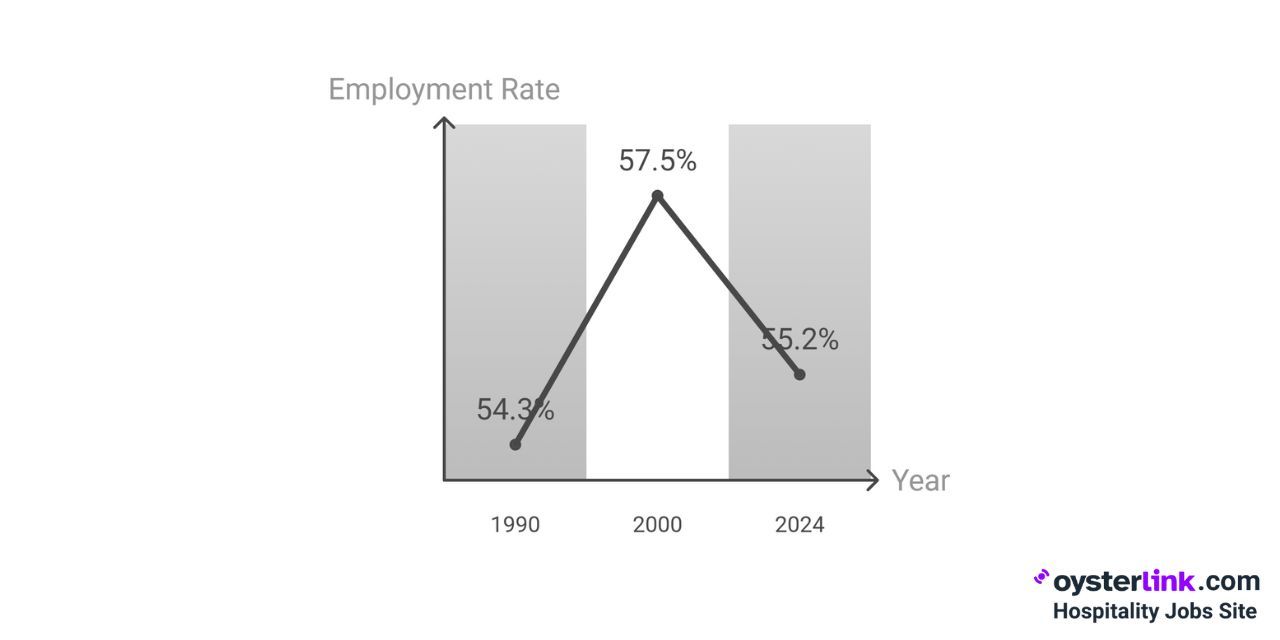
Since detailed research or reports on women's employment rates by state don't exist, we will focus on the female labor force participation rate.
Female Labor Force Participation Across the States
Female labor force participation rate refers to the percentage of women who are either employed or actively looking for work. It includes women who have jobs as well as those who are unemployed but seeking employment.
Participation rates vary widely from state to state, influenced by economic, social and cultural factors. Some states reach over 79%, while others like West Virginia and Alabama hover around 63–66%, reflecting notable regional differences.
To better illustrate these patterns, here is a table listing each state’s female labor force participation rate:
State | Labor Force Participation Rate for Women |
Alabama | 66.3% |
Alaska | 74.8% |
Arizona | 68.8% |
Arkansas | 67.2% |
California | 70.1% |
Colorado | 75.0% |
Connecticut | 77.4% |
Delaware | 74.2% |
Florida | 71.3% |
Georgia | 70.8% |
Hawaii | 75.1% |
Idaho | 69.6% |
Illinois | 74.7% |
Indiana | 73.0% |
Iowa | 79.2% |
Kansas | 75.5% |
Kentucky | 68.0% |
Louisiana | 68.5% |
Maine | 75.5% |
Maryland | 77.9% |
Massachusetts | 77.9% |
Michigan | 71.7% |
Minnesota | 81% |
Mississippi | 67.5% |
Missouri | 73.5% |
Montana | 74.1% |
Nebraska | 79.5% |
Nevada | 72.0% |
New Hampshire | 78.1% |
New Jersey | 74.9% |
New Mexico | 67.7% |
New York | 73.2% |
North Carolina | 71.8% |
North Dakota | 79.9% |
Ohio | 73.5% |
Oklahoma | 68.6% |
Oregon | 72.2% |
Pennsylvania | 73.8% |
Rhode Island | 76.2% |
South Carolina | 70.7% |
South Dakota | 79.0% |
Tennessee | 69.7% |
Texas | 69.5% |
Utah | 69.8% |
Vermont | 78.7% |
Virginia | 74.8% |
Washington | 71.0% |
West Virginia | 62.9% |
Wisconsin | 78.6% |
Wyoming | 75.2% |
The table shows that women’s participation in the workforce varies a lot depending on the state. Minnesota stands out with the highest labor force participation rate for women at 81.0%, showcasing a robust environment that encourages and supports female employment.
On the other end of the spectrum, West Virginia has the lowest rate, with only 62.9% of women participating in the labor force.
Furthermore, a closer look at the data reveals regional trends. States in the Midwest generally exhibit strong rates of women's labor force participation, likely due to a combination of factors, including strong manufacturing and agricultural sectors, as well as supportive social policies.
Conversely, Southern states tend to have lower rates, which may be attributed to historical factors, cultural norms and differences in economic opportunities. These disparities underscore the importance of examining the specific context of each state when analyzing female employment patterns.
Factors Influencing Female Employment Rates
Several factors contribute to the differences in female employment rates across states. These include:
- Economic conditions: The availability of jobs in industries like healthcare and education, which often employ more women, can boost participation rates. States with strong sectors in these fields tend to have higher female employment.
- Demographics: Age, race and ethnicity distributions matter. Urban areas often offer more diverse job options and better access to childcare, making it easier for women to work and manage family responsibilities.
- Policy decisions: Access to affordable childcare and paid family leave play a big role. When these policies are in place, women are more likely to stay employed, while high childcare costs or lack of paid leave can be barriers.
- Cultural norms: Societal attitudes towards women working and gender roles influence participation. Supportive cultures encourage higher engagement, whereas traditional norms might limit opportunities or impose expectations on women’s roles.
Part-Time Work and Its Impact
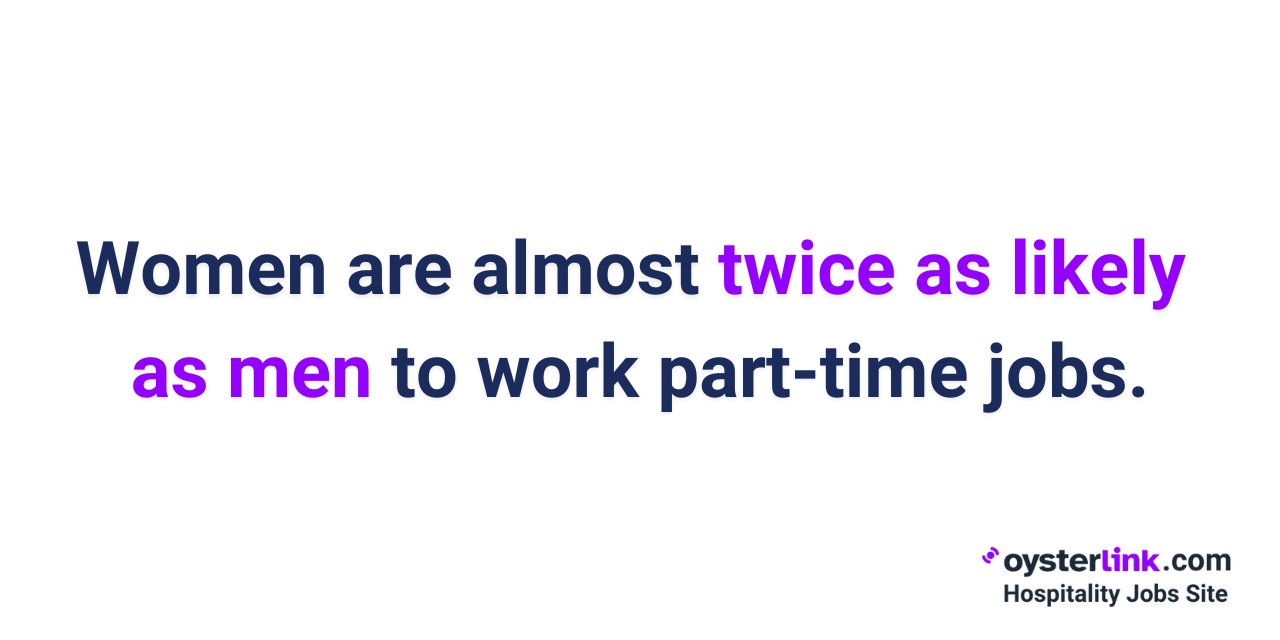
Women are almost twice as likely as men to work part-time jobs. This disparity raises important questions about the reasons behind this trend and the impact it has on women's economic well-being.
While some women may choose part-time work to better accommodate family obligations or other personal commitments, others may be limited to part-time positions due to a lack of full-time opportunities or the high cost of childcare.
The availability of flexible work arrangements can also play a role, as some employers are more willing than others to offer part-time or flexible schedules.
Part-time work can present challenges. These jobs often come with lower pay and unpredictable schedules.
As a result, it can be difficult for women to achieve financial security or advance in their careers.
The lack of benefits, such as health insurance and retirement contributions, can also have long-term consequences for women's financial stability.
Unemployment Among Women
The unemployment rate for women in the United States was 3.9% in 2024, well below the peak of 8.6% recorded in 2010.
However, these rates can differ significantly across various demographic groups, underscoring the ongoing and complex challenges women continue to face in the labor market.
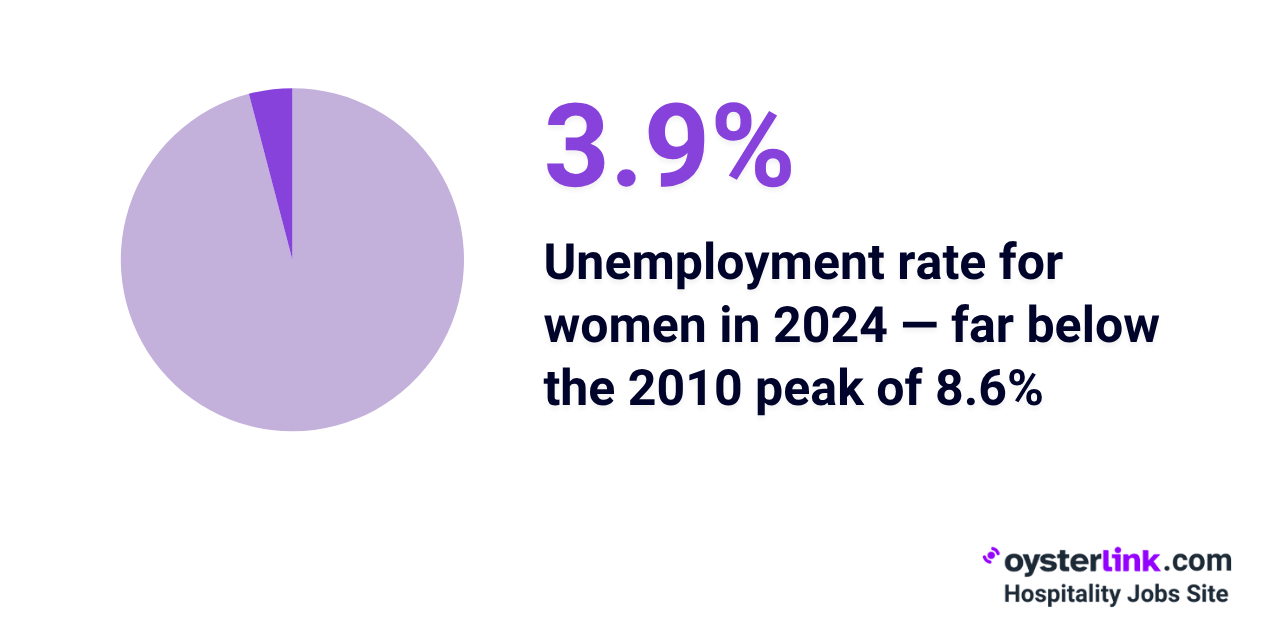
Single mothers and young women often face additional hurdles, such as limited access to education, experience or supportive networks.
One of the biggest obstacles remains the lack of affordable childcare, which makes it difficult for many women to balance work and family responsibilities.
These ongoing issues emphasize the importance of policies that promote women’s economic stability and equal opportunities.
The Employment Experiences of Immigrant Women
Immigrant women face unique challenges in the U.S. labor market, often navigating a complex set of obstacles that can limit their opportunities and earnings.
While many are highly skilled and make significant contributions to the economy, immigrant women have lower median annual earnings compared to U.S.-born women.
This pay gap is clear in recent data: In 2024, foreign-born women working full-time earned a median of $911 per week, while U.S.-born women earned $1,074 per week.
On an annualized basis, that’s about $47,400 vs $55,800 — a difference of about $8,400 per year.
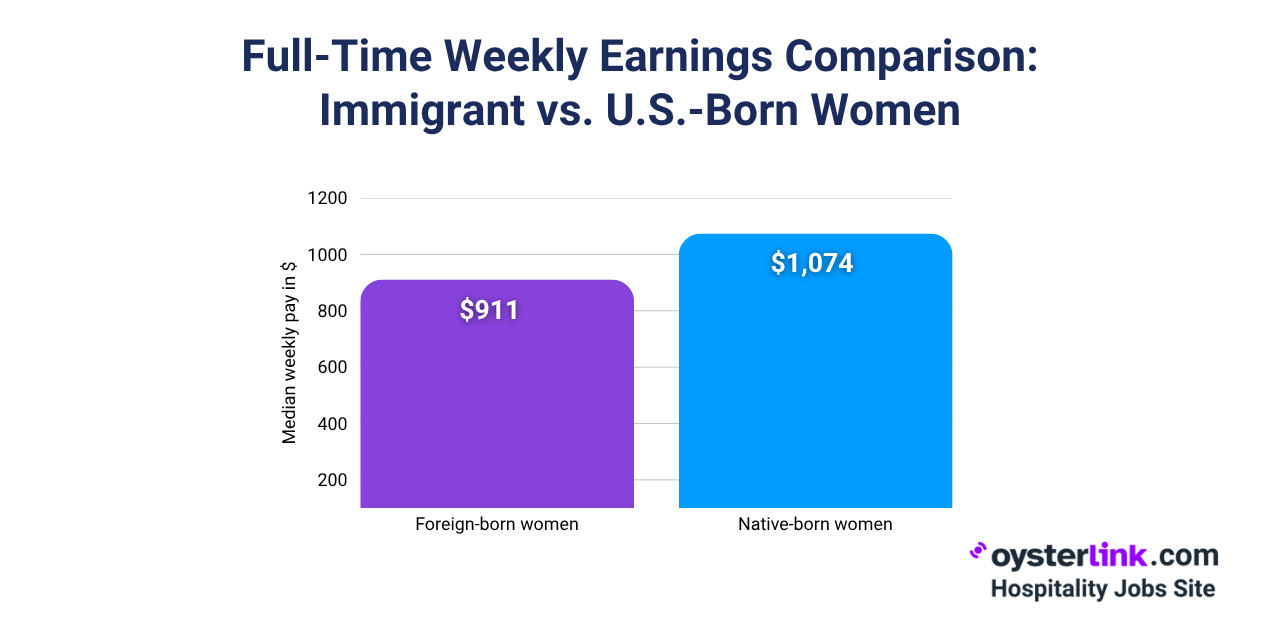
This disparity may be due to factors such as language barriers, difficulty in transferring credentials from other countries and discrimination. Language proficiency is often a key determinant of employment opportunities and earnings for immigrant women.
Those with limited English skills may be relegated to lower-paying jobs with fewer opportunities for advancement. The process of obtaining recognition for foreign credentials can also be lengthy and expensive, preventing immigrant women from fully utilizing their skills and education.
Despite these challenges, immigrant women contribute significantly to the U.S. labor force across various sectors such as hospitality.
Expanding access to affordable English-language programs, improving the recognition process for foreign credentials and enforcing equal-pay regulations are measures that could help reduce earnings disparities and improve workforce integration.
See also: Immigrant Labor in Hospitality: What the Data Shows
Methodology
The data and analysis in this article are primarily based on research from the Institute for Women's Policy Research (IWPR) and the U.S. Department of Labor.
To provide a broader perspective, information from the U.S. Bureau of Labor Statistics and Statista’s surveys on women’s employment and unemployment rates in the U.S. is also integrated into the analysis.
About OysterLink
OysterLink is a platform that connects hospitality professionals with employers, making it easier to find top jobs or hire the right talent quickly.
For job seekers, it offers salary information, career tips and access to top job listings. For employers, it provides tools to create effective job ads, find suitable candidates and access useful business resources.
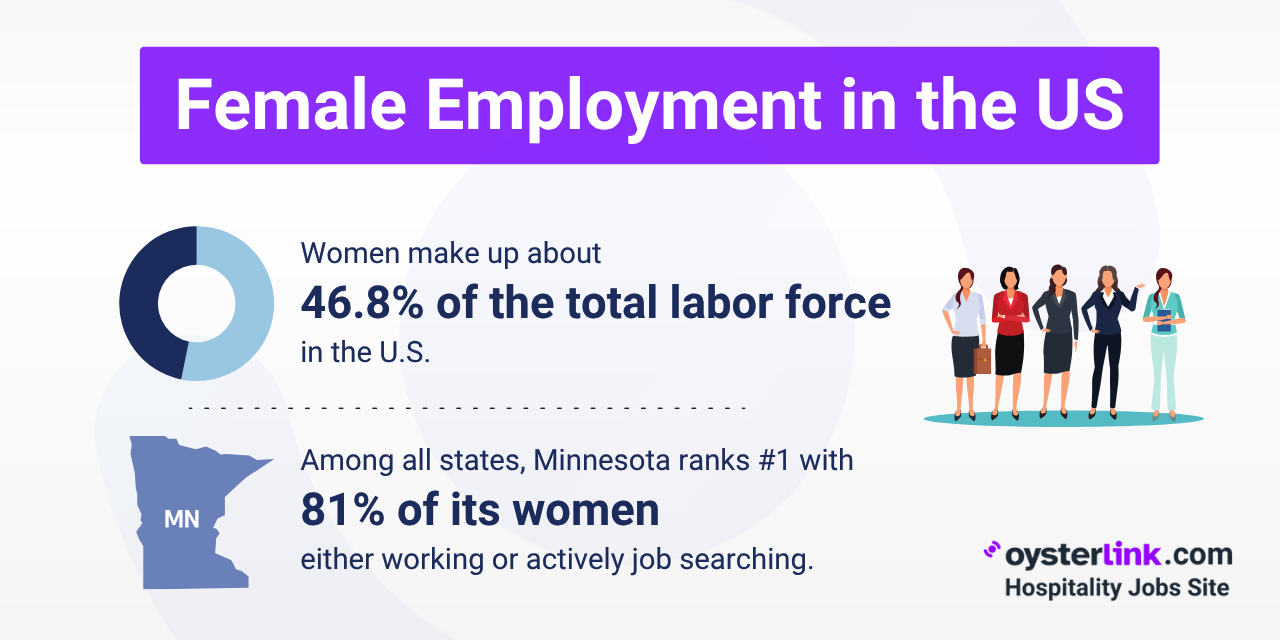
.png)
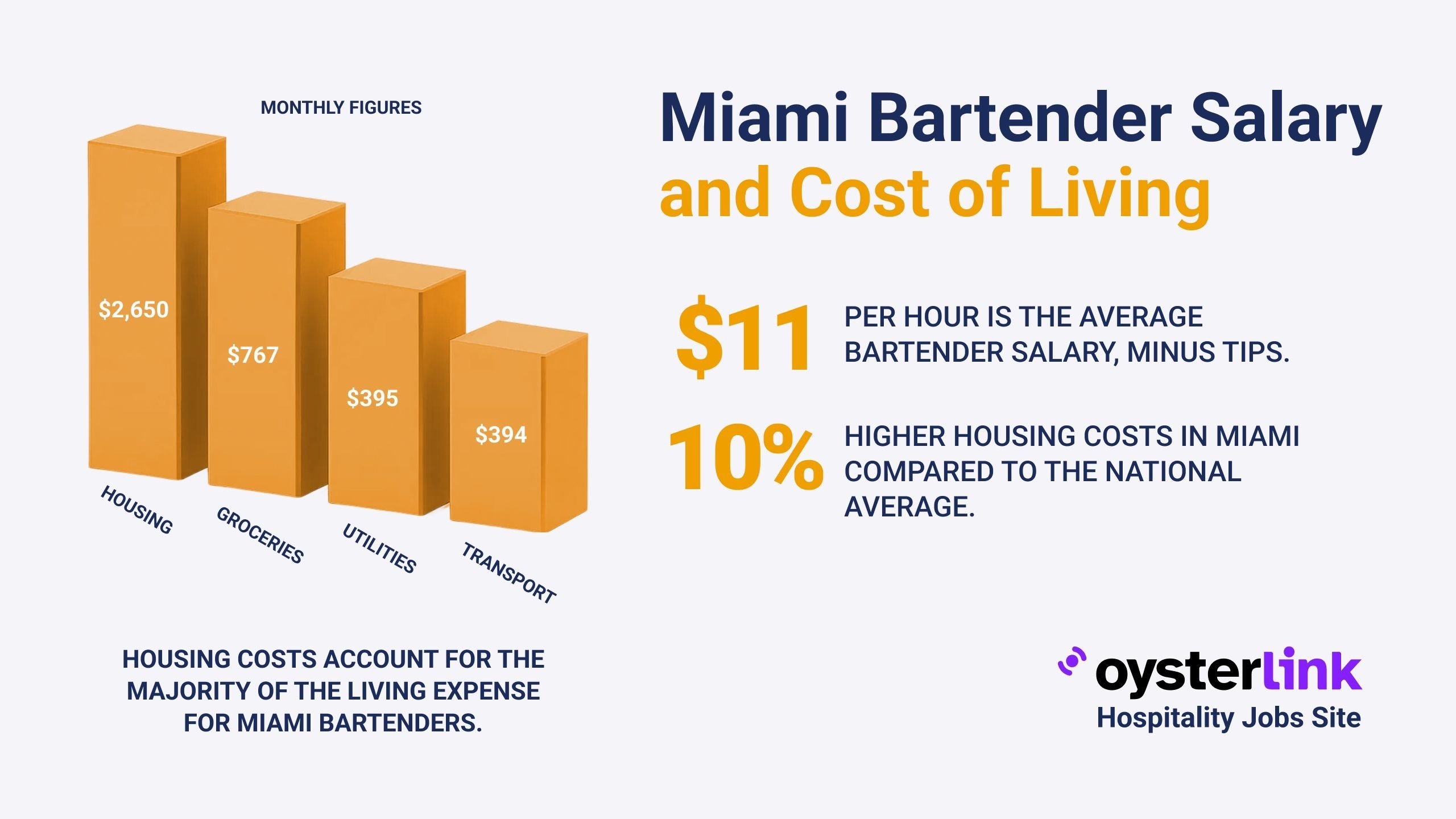
.png)
.jpg)